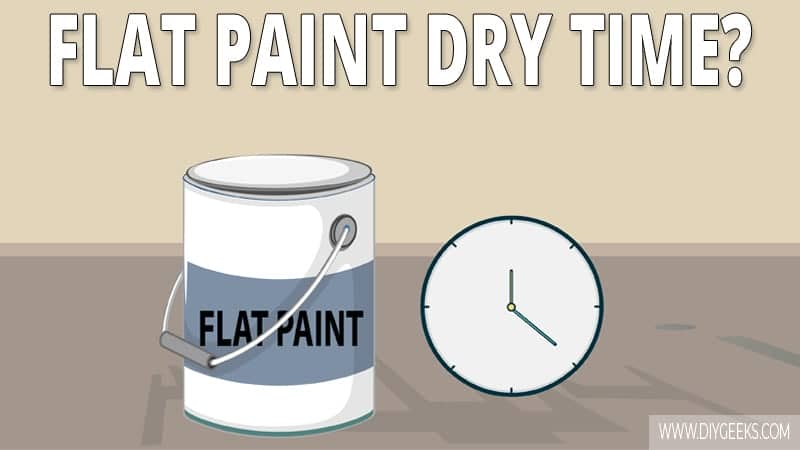Flat paint is known for its lowest amount of sheen (gloss) and additives.
Flat paint takes between 30 minutes to 1 hour to dry between coats, and 2-4 hours to cure (fully dry).
Its dry and cure time depends on room temperature and humidity, number of coats, and coat viscosity.
How Long Does Flat Paint Take to Dry Between Coats?
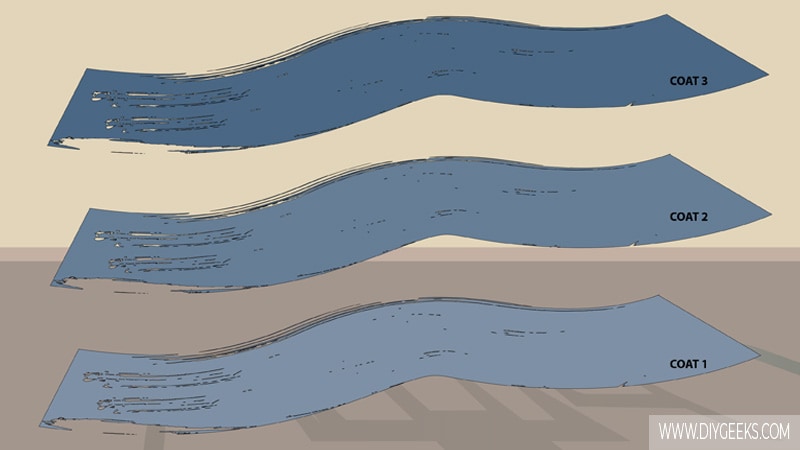
Flat paint takes between 30 minutes to 1 hour to dry between coats. The exact dry time depends on the room temperature and humidity, number of coats, and coat viscosity.
Flat paint dries through evaporation — the paint solvent (water or oil) must evaporate and the coating must become hard or rigid for the paint to dry. The faster the solvent evaporates, the faster the paint dries. Since most flat paints are water-based, they dry fast as their solvent (water) evaporates fast.
If you re-coat flat paint too soon, the finish will remain wet longer, turn sticky or tacky, or peel off. If the paint solvent hasn’t evaporated yet and you paint over it, the evaporation process will slow down and the paint takes longer to dry.
To know if the paint is dry enough for a re-coat, swipe extra fine-grit sandpaper over the paint coating. The paint is dry if the sandpaper moves freely without getting clogged.
How Long Does Flat Paint Take to Cure?
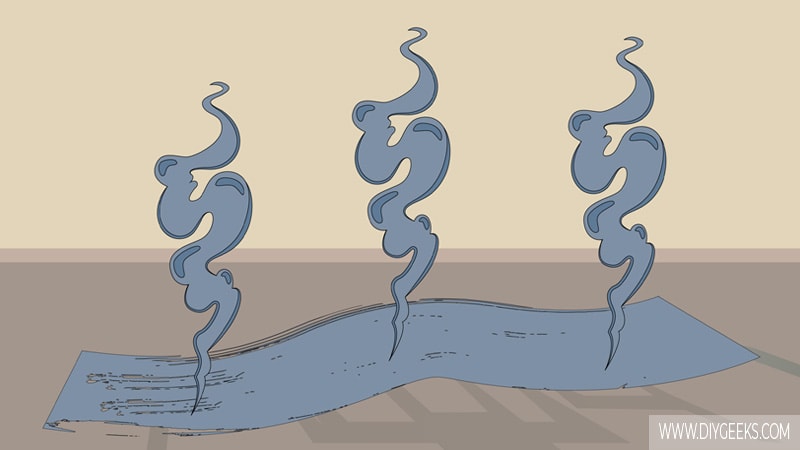
Flat paint takes between 2-4 hours to cure (fully dry). The paint cure time refers to the period it takes paint to fully dry, harden, and reach its maximum durability, strength, and adhesion.
When the paint cures, you can clean and use the paint finish. If you clean or use a paint finish before it cures, it will remain wet longer, crack, or peel off.
Flat paint must cure (fully dry) for 2-4 hours before sealing it. If you seal the paint before it cures, the sealer will prevent the paint from curing, and depending on how much it has already dried, the paint can either take longer to cure or will peel off.
How To Speed Up Flat Paint Drying Time?
To speed up flat paint drying time, do the following things.
- Increase the Solvent Evaporation Rate.
- Use a Sprayer to Apply the Paint.
- Increase Air Circulation.
- Use a Dehumidifier.
1. Increase the Solvent Evaporation Rate
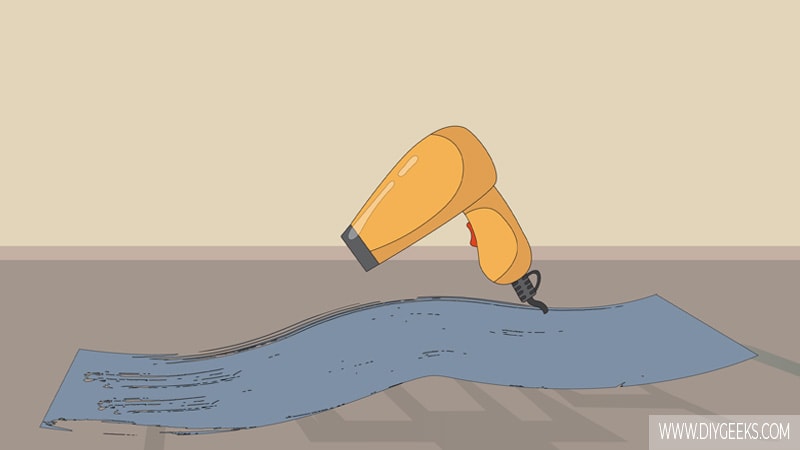
Flat paint dries faster if you increase the solvent evaporation rate. If the paint solvent (water) evaporates faster, the paint will dry faster too. To increase the solvent evaporation rate, increase the heat around the paint coating with a hairdryer or heater.
A guide to this method is listed below.
- Use a hairdryer with medium temperature.
- Point the hairdryer nozzle at the paint coating.
- Move the hairdryer around the paint for 5 minutes.
- Turn off the hairdryer and let the paint dry completely.
Don’t use the hairdryer to dry the paint completely as it makes the paint dry too quickly, and this will eventually cause the paint to crack and peel off.
2. Use a Sprayer to Apply the Paint
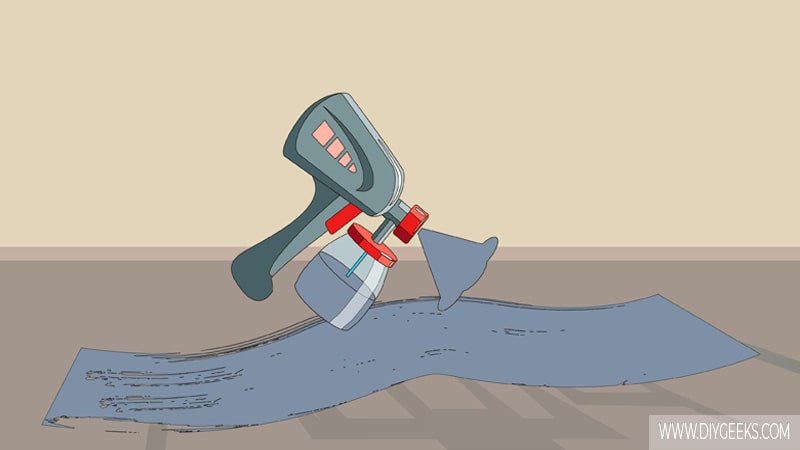
Flat paint dries faster if you use a sprayer to apply it. Sprayers apply thinner paint coats than brushes or rollers, and the thinner the paint coating the faster it dries.
If flat paint is too thick for a sprayer, thin it with water in a ratio of 3:1 (3 parts paint to 1 part water).
To apply thin flat paint coatings with a sprayer, do the following things.
- Load the paint into the sprayer.
- Prime the sprayer pump so the paint flows freely.
- Use a small sprayer nozzle (tip) so it applies thinned coatings.
- Spray the paint.
3. Increase Air Circulation
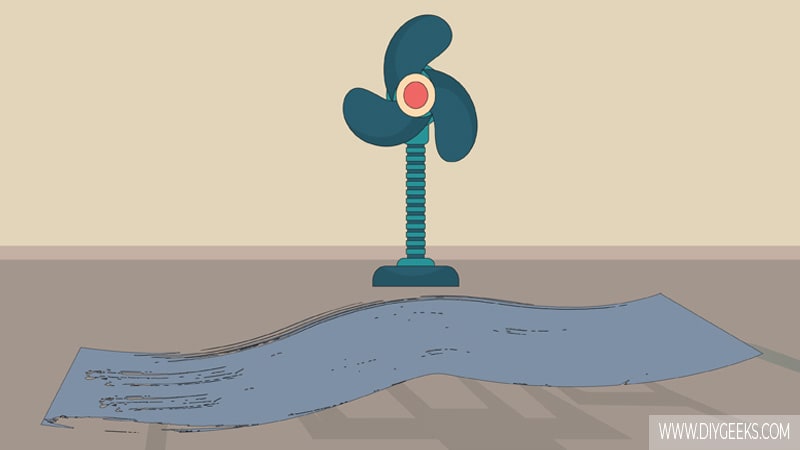
If you increase the room air circulation, flat paint will dry faster as the solvent (water) will evaporate faster. The higher the air circulation, the faster the evaporation process completes and the paint dries.
To increase the air circulation around a paint coating, do the following things.
- Open all windows and doors.
- Open the air vents.
- Turn on the fans and direct them toward the paint.
- Turn on the air conditioner.
4. Use A Dehumidifier
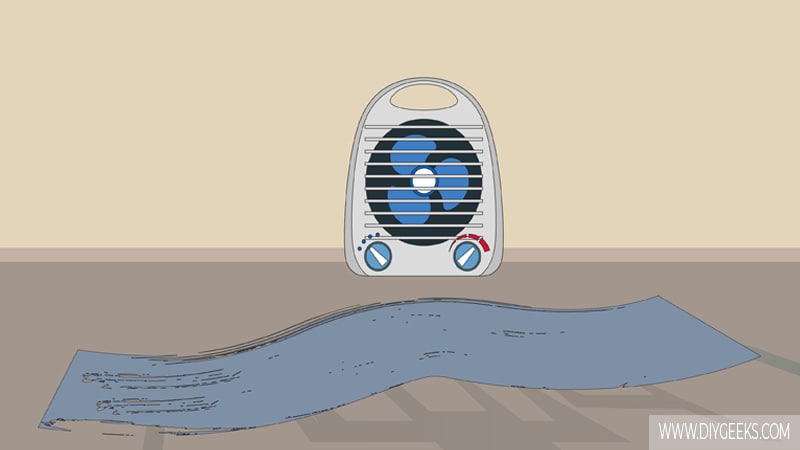
Flat paint dries faster if the room humidity levels are below 50%. The lower the room humidity, the less water in the atmosphere, and the faster the paint dries.
To decrease room humidity levels, use a dehumidifier. The dehumidifier removes excess moisture in the air and replaces it with dry cool air.
Here is a guide:
- Allow proper ventilation in the room.
- Place the dehumidifier near the paint coating.
- Set the dehumidifier between 30 and 50%. If the weather is cold, set it higher.
- Leave the dehumidifier to work until the paint dries.
Indoors vs Outdoors Dry Time
Flat paint dries faster outdoors than indoors during summer seasons or if the temperature is high, and dries faster indoors than outdoors during winter seasons or if the temperature is low.
Paint dries faster if the temperature is higher than 50°F (10°C) and the humidity levels lower than 50%.
If the temperature is lower than 50°F (10°C) and the humidity levels are lower than 50%, flat paint takes two times longer to dry than usual. That’s because the solvent will take longer to evaporate in moist conditions.
Why Isn’t Matte Paint Drying?
Matte paint isn’t drying for the following reasons.
- You applied it over a dirty surface.
- There’s grease or oil on the painted surface.
- You applied flat paint over oil-based paint (not compatible).
- The surface is wet.
- You re-coated too soon.
- You applied too many coats.
